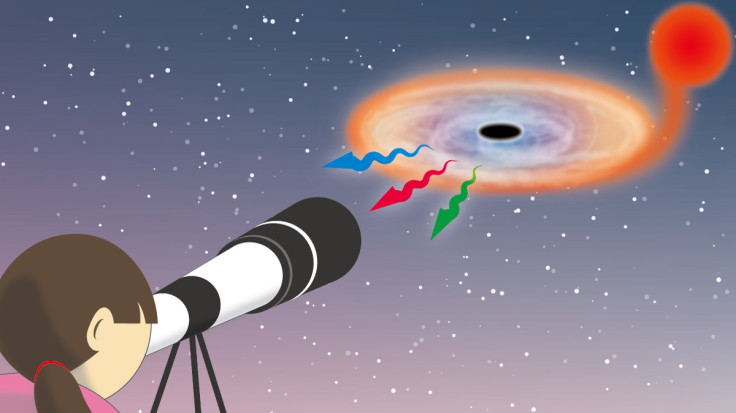Black holes: All you need is a 20cm telescope to see the great void phenomena

All you need to see a nearby, active black hole is the amateur telescope you got for Christmas. Research has shown anything bigger than a 20cm telescope is enough to witness the phenomena of black hole activity.
A new study from Kyoto University, Japan, shows that optical rays, or visible light, is emitted from the gases surrounding black holes.
Around every few decades, a black hole will have an outburst of energy from all of the substances that have fallen into it. The outbursts are as visible to any amateur astronomer as flickering light – similar to someone turning a lightbulb on and off repeatedly in a house far, far away.
Mariko Kimura, lead author of the paper, said: "We now know that we can make observations based on optical rays – visible light, in other words – and that black holes can be observed without hi-spec X-ray or gamma-ray telescopes."
The researchers analysed the nearest black hole to Earth, V404 Cygni, which is 8,000 light years away. In June 2015, the black hole had its first outburst in 26 years and astronomers used that spectacle to gain a huge amount of data.
After analysing the flashes of light – or optical rays – the scientists discovered they were linked to X-rays coming from the gas surrounding the black hole. This gas is part of the accretion disk – a section of the black hole that slowly sucks in gases from companion stars.
Scientists usually use the X-rays from the accretion disk to collect data on black holes. However, researchers in the study discovered X-rays heat the outer edge of the accretion disk, making it emit visible light for everyone to see.
"We're very pleased that our international observation network was able to come together to document this rare event," said co-author Daisuke Nogami. The study, published in Nature, utilised many different researchers across different time zones, so that someone was always watching V404.
Nogami added: "Stars can only be observed after dark, and there are only so many hours each night, but by making observations from different locations around the globe we're able to take more comprehensive data."
© Copyright IBTimes 2025. All rights reserved.






















